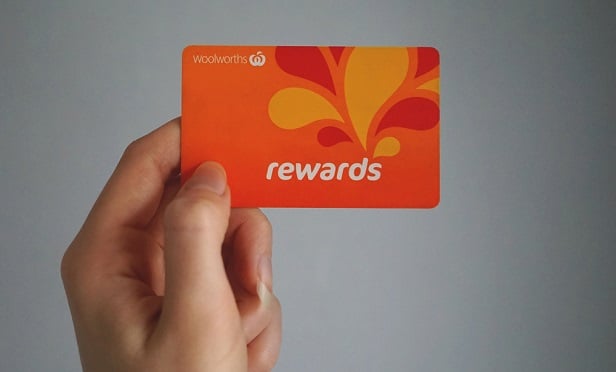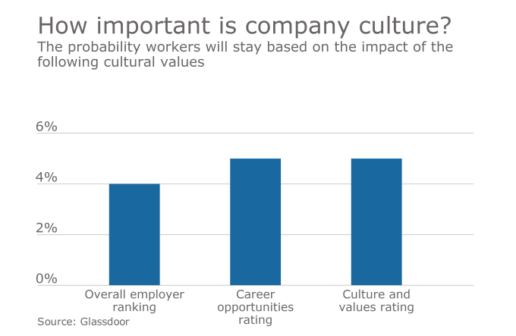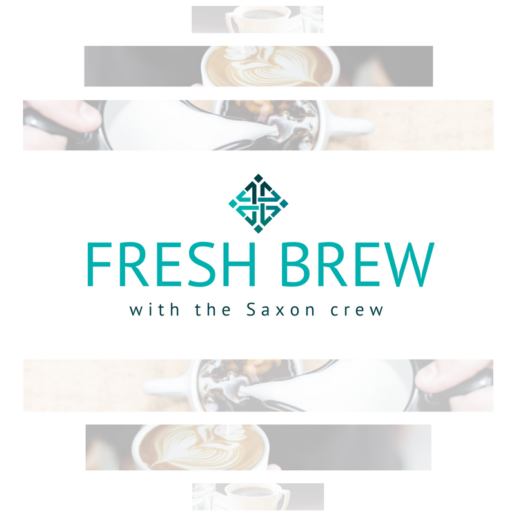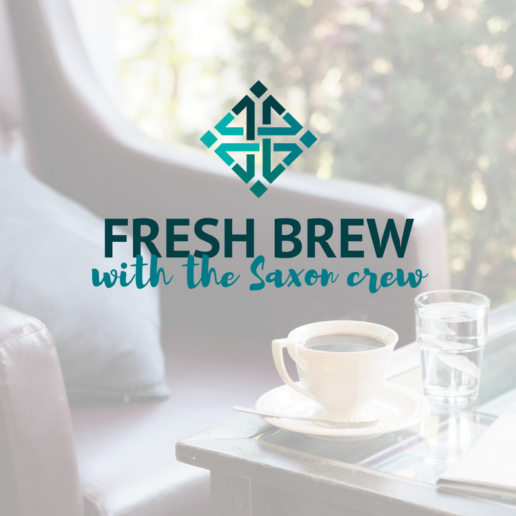Half of Americans think the ACA marketplace is collapsing
Most Americans are happy with the insurance they buy on the individual market, yet those same people think the markets are collapsing before their eyes.
A poll by the Kaiser Family Foundation (Kaiser Health News is an editorially independent program of the foundation), released Tuesday, found that 61 percent of people enrolled in marketplace plans are satisfied with their insurance choices and that a majority say they are not paying more this year compared with last year’s premium costs.
Yet, more than half of the overall public — 53 percent — also think the Affordable Care Act’s marketplaces are “collapsing.”
Experts have warned that some policy actions supported by the Trump administration would undermine the market, including repealing the penalty for going without insurance and giving people the option to buy short-term plans. Such plans are often less expensive but cover fewer benefits. They are not automatically renewable, and insurers are able to charge people with medical conditions more — or exclude them altogether.
But only about one-fifth of people who obtain coverage on the individual market were even aware that the mandate penalty had been repealed as of 2019, according to the poll. It is still in effect this year.
Nine in 10 enrollees said they would still buy insurance without the penalty, and 34 percent said the mandate was a “major reason” they chose to buy insurance at all.
“They may have been prompted to buy the coverage in the first place because of the mandate,” said Sabrina Corlette, a professor at Georgetown University’s Health Policy Institute. “But now that they’ve got it, they clearly value it.”
Most of the people who buy plans because they don’t get coverage through work or the government, 75 percent, said they bought insurance to protect against high medical bills, and 66 percent said peace of mind was a major reason.
In February, President Donald Trump eased some of the restrictions on short-term insurance plans, allowing them to cover people for 12 months instead of three.
Critics worried this alternative would draw people away from traditional insurance plans and weaken the individual market. According to the poll, though, only 12 percent of respondents buying on that market said they’d be interested in buying one of the short-term plans.
Georgetown’s Corlette cautioned that these numbers could change when people are faced with an actual choice next open enrollment season.
“If you look at how these things are marketed, your average consumer will not be able to tell that these products are any different from a traditional health plan,” she said.
Most people said they didn’t face a premium increase this year. Thirty-four percent said their premiums were “about the same” as last year and 23 percent said they actually went down.
That’s not surprising, said Joseph Antos, a resident scholar at the conservative American Enterprise Institute who follows the health industry. Many consumers saw their premium subsidies rise too.
Thirty-five percent of people said one of the major reasons they bought insurance was because government subsidies made it affordable.
The subsidies that people receive, Antos noted, went up to offset the premium increase in many cases, especially if consumers took the advice of experts and shopped around for coverage.
“They’re buying because they feel they need insurance and that their net premiums and deductibles add up to something they’re willing to buy,” Antos said.
The poll was conducted Feb. 15-20 and March 8-13 among 2,534 adults. The margin of sampling error is +/-2 percentage points for the full sample, +/-7 percentage points for all non-group enrollees and +/-9 percentage points for marketplace enrollees.
Source: Kaiser Health News senior correspondent Julie Appleby contributed to this report.
By Rachel Bluth, Kaiser Health News | April 03, 2018 at 10:06 AM | Originally published on BenefitsPro
Healthcare analytics market grows as providers take aim at cost-cutting
A combination of artificial and human intelligence data analytics, offering the opportunity to bring greater customization to medical approaches, is expected to increase in demand over the next few years.
 Data-enriched tools have cut the communication gap between caregivers and patients even as they provide a large amount of data that can be used to create personalized treatments. (Image: Shutterstock)
Data-enriched tools have cut the communication gap between caregivers and patients even as they provide a large amount of data that can be used to create personalized treatments. (Image: Shutterstock)
The need by hospitals and other health care providers to cut the cost of providing care is helping to drive up the global health care/analytics market, to reach an anticipated worth of $53.65 billion by 2025.
That’s according to a new report by Grand View Research, Inc., which says that hospitals are already using health care analytics to manage the number of workers working in a particular shift.
Citing the example of a hospital in Paris that uses health care analytics to predict the number of patients that may be hospitalized, the report points out that such data can be used to decide the number of staff members that will be needed for a particular shift, thus assisting in driving down the cost of labor in hospitals.
Data-enriched tools such as mHealth, eHealth, Electronic Health Records and mobile applications have cut the communication gap between caregivers and patients even as they provide a large amount of data that can be used to create personalized treatments. However, patients might hesitate to use such tools; that could weigh on the implementation of analytics.
But a combination of artificial and human intelligence data analytics, offering the opportunity to bring greater customization to medical approaches, is expected to expand demand for such tools over the next few years.
Among other findings in the report is the significant market share held by descriptive analytics in 2015 because of its applications in process optimization in organizations. In addition, the services category dominated the component segment in 2015, with outsourcing of big data services contributing to their growth in aiding the high volume of services rendered.
The hardware systems category came out the winner in the component segment, with the high cost of hardware contributing to its growth, while on-premise delivered analytic services dominated the delivery mode category in 2015, capturing a market share of approximately 54.0 percent.
North America has captured a significant share in the global market, the report finds, with advanced health care infrastructure in the region and growing per capita health care spending supporting greater consumption of these services.
Source:
By Marlene Satter | April 02, 2018 at 12:13 PM | Originally published on BenefitsPro
Medicare Advantage payments to see 3.4 percent increase next year

The U.S. agency that oversees Medicare said it will increase payments to privately run health plans for the elderly by an average of 3.4 percent next year, almost double the amount it had previously estimated.
That’ll be a boon for insurers such as UnitedHealth Group Inc. and Humana Inc. that have big businesses selling the private plans, known as Medicare Advantage. Including changes based on how sick or healthy people are, the total increase in payments to insurers is estimated to be about 6.5 percent, on average, the Centers for Medicare and Medicaid Services said in a statement Monday.
Medicare Advantage is an important source of growth for health insurers as the U.S. population ages and more people opt for the private plans, rather than the traditional Medicare program. About 21.4 million people are enrolled in the private plans, while 37.7 million rely on standard Medicare.
Medicare Advantage has drawn plenty of interest from both startups and established firms. Walmart Inc. may be seeking a broader partnership with Humana Inc. in part to benefit from growing enrollment in the plans, Bloomberg reported late last week. CVS Health Corp. agreed to acquire Aetna Inc. late last year in a bet in part on providing better care for seniors.
Source: Tracer Z. (3 April 2018). "Medicare Advantage payments to see 3.4 percent increase next year" [Web Blog Post]. Retrieved from Benefits Pro.
10 perks that help attract and retain workers
Job seekers and employees today have more control over their careers than ever before. Leaving current positions for better opportunities, and being more selective when applying for a new job, are now commonplace.
With the war for talent in full effect, companies of all sizes have had to take a close look at their compensation and employee benefits to ensure that they meet, or preferably exceed, expectations.
While keeping up with the latest employee benefits trends is one great way to maximize benefit plans, employers should also explore additional employee and workplace perks to help with recruiting, retention and engagement.
1. Free snacks and coffee
 (Photos: Shutterstock)
(Photos: Shutterstock)
An often-overlooked way to enhance the workplace is to provide employees with complimentary snacks and coffee. Not only does this help employees save a few dollars each day, but office snacks have shown to increase workplace production. And offering employees healthy alternatives can get people more energized and involved with a company’s overall wellness program.
2. Flexible work schedules
 One of the biggest trends in the business world has been a shift away from the traditional 9 to 5 work day. While some positions require such a schedule, more and more companies are enabling employees to have more flexibility with their working hours. As a matter of fact, many businesses are including flexible working schedules in their job descriptions and on career sites to help attract younger job seekers. As work-life balance continues to become more important to employees, flexible working schedules can be valuable perk for employers to offer.
One of the biggest trends in the business world has been a shift away from the traditional 9 to 5 work day. While some positions require such a schedule, more and more companies are enabling employees to have more flexibility with their working hours. As a matter of fact, many businesses are including flexible working schedules in their job descriptions and on career sites to help attract younger job seekers. As work-life balance continues to become more important to employees, flexible working schedules can be valuable perk for employers to offer.
3. Working from home
 While telecommuting is becoming more common, not all employees can exclusively work-from-home. However, enabling employees to work at home on occasion can be a great perk for keeping employees happy and engaged. Providing employees with the tools and resources necessary to work from home when needed can greatly assist with lowering turnover, and can also help reduce stress and improve the employee experience.
While telecommuting is becoming more common, not all employees can exclusively work-from-home. However, enabling employees to work at home on occasion can be a great perk for keeping employees happy and engaged. Providing employees with the tools and resources necessary to work from home when needed can greatly assist with lowering turnover, and can also help reduce stress and improve the employee experience.
4. Employee assistance programs
 A greater focus on employee wellness – both physical AND mental – is occurring in companies big and small. One way to help with this initiative is to have an employee assistance program (EAP). These programs provide counseling to employees for both professional and personal issues, and can include consultations with licensed clinicians for financial and legal services, grief counseling, and day-to-day support for full-time employees and anyone in their household.
A greater focus on employee wellness – both physical AND mental – is occurring in companies big and small. One way to help with this initiative is to have an employee assistance program (EAP). These programs provide counseling to employees for both professional and personal issues, and can include consultations with licensed clinicians for financial and legal services, grief counseling, and day-to-day support for full-time employees and anyone in their household.
5. Company events
 You have probably seen or heard of Fortune-500 companies throwing elaborate and expensive events for their workforce. While small employers can’t do something to this level, having company-sponsored events throughout the year is a great way to boost employee morale and build a culture. These events also present an opportunity to boost employer branding and recruitment marketing efforts. Things like company picnics, holiday parties, and even individual team outings (such as a bowling night) help to boost company morale.
You have probably seen or heard of Fortune-500 companies throwing elaborate and expensive events for their workforce. While small employers can’t do something to this level, having company-sponsored events throughout the year is a great way to boost employee morale and build a culture. These events also present an opportunity to boost employer branding and recruitment marketing efforts. Things like company picnics, holiday parties, and even individual team outings (such as a bowling night) help to boost company morale.
6. Employee referral programs
 Hiring the best talent is a mission all companies have in common. But with recruiting more challenging than ever, it can be difficult to accomplish this goal. However, establishing an employee referral program (especially one that provides a cash or bonus reward) is a fantastic way to get your entire company involved with recruiting. These programs also help employees feel more invested in their organizations, especially if they can bring friends or professional colleagues to their organization.
Hiring the best talent is a mission all companies have in common. But with recruiting more challenging than ever, it can be difficult to accomplish this goal. However, establishing an employee referral program (especially one that provides a cash or bonus reward) is a fantastic way to get your entire company involved with recruiting. These programs also help employees feel more invested in their organizations, especially if they can bring friends or professional colleagues to their organization.
7. Lunch and learns
 Learning and development is important to employees. While investing in large-scale programs and bringing in industry experts on a routine basis may not be possible, each company has their own subject-matter-experts who can provide learning opportunities to their co-workers. A monthly lunch and learn session can be a great way to inform the entire company on new initiatives and projects, as well as boost employee engagement throughout the company.
Learning and development is important to employees. While investing in large-scale programs and bringing in industry experts on a routine basis may not be possible, each company has their own subject-matter-experts who can provide learning opportunities to their co-workers. A monthly lunch and learn session can be a great way to inform the entire company on new initiatives and projects, as well as boost employee engagement throughout the company.
8. Employee discounts
 Another great additional perk that employees will enjoy are discounts on certain items or events. Discounts on items like clothing brands, tech, Broadway shows, sporting events, and many others can help employees save money while enjoying things that they enjoy. These types of perks are becoming increasingly popular, even for smaller employers and can be a great tool in recruiting. Not to mention the role they play with employee happiness, engagements, and ultimately retention.
Another great additional perk that employees will enjoy are discounts on certain items or events. Discounts on items like clothing brands, tech, Broadway shows, sporting events, and many others can help employees save money while enjoying things that they enjoy. These types of perks are becoming increasingly popular, even for smaller employers and can be a great tool in recruiting. Not to mention the role they play with employee happiness, engagements, and ultimately retention.
9. Summer hours
 We discussed earlier about the value of flexible work schedules. A fantastic addition to an already popular perk, giving employees summer working hours are a great way to boost happiness and morale. For example, many companies let employees leave the office early on Fridays to get a head start on their weekend plans. With work-life balance becoming more important, this simple perk can be a great for current and future employees alike!
We discussed earlier about the value of flexible work schedules. A fantastic addition to an already popular perk, giving employees summer working hours are a great way to boost happiness and morale. For example, many companies let employees leave the office early on Fridays to get a head start on their weekend plans. With work-life balance becoming more important, this simple perk can be a great for current and future employees alike!
10. Employee rewards and recognition
 Boosting employee engagement and the overall employee experience are critical objectives for all companies today. An excellent way to help with these goals are to recognize and reward employees throughout the year. Whether it’s completing a difficult or important project, reaching certain milestones with the organization (such as years of service), or completing outside education, these can all be extremely valuable for the individual and the company. Additionally, providing rewards along with recognition can go a long way to building engaged culture and a great employer brand.
Boosting employee engagement and the overall employee experience are critical objectives for all companies today. An excellent way to help with these goals are to recognize and reward employees throughout the year. Whether it’s completing a difficult or important project, reaching certain milestones with the organization (such as years of service), or completing outside education, these can all be extremely valuable for the individual and the company. Additionally, providing rewards along with recognition can go a long way to building engaged culture and a great employer brand.
Source: Altiero M. (3 April 2018). "10 perks that help attract and retain workers" [Web Blog Post]. Retrieved from Benefits Pro.
Why equality matters in the workforce
As the world prepares for the next great technological leap forward since the industrial revolution — through AI, machine learning and the internet of things — employers need to ask who’s going to be left behind in that transformation. According to Tony Prophet, Salesforce’s Chief Equality Officer who recently spoke at the Great Place to Work for All conference in San Francisco, employers must think if these innovations will it make the world more equal or less equal.
One of the four core values at Salesforce is equality, said Prophet. Not only is it important externally, but recognizing it as part of your company’s foundation impacts your decisions, and it starts at the top.
“The people most at risk, you can see it happening over the last decade, are often young women, girls, people of color,” he said. “We naturally want to create opportunities for everyone.”

Prophet noted that the company views itself as having a higher purpose to drive toward an age of company equality. Alos, the CEO and senior executives must set the tone where equality can be effective, and it’s a philosophy that has been a governing value from the beginning.
And as the company moves forward, Salesforce rests on four pillars of equality:
· Equal opportunity — inclusion for all.
· Equal rights — equality for every human being.
· Equal pay — equal pay for equal work.
· Equal education — equal access to quality education.
“None of us are going to be equal until all of us are equal,” Prophet said. And in creating this culture, the company created employee-led and employee-organized groups centered around common life experiences or backgrounds, and their allies.
Equality is an increasing value as discrepancies materialize through globalization, added Michael Rogers, CEO of iFocus: Human Capital Solutions, a consulting firm.
He points to vocational scholars, such as Boston College Lynch School of Education’s David Blustein, who note that access to education, fair consideration for work and the ability to make career decisions are not the same for all.
“Organizations that recognize and address these disparities, through strong organizational culture, position themselves for success now and in the future,” Rogers said.
Back at Salesforce, Prophet noted the employers as implemented a number of groups, called Ohana Groups – built around the Hawaiian concept of Ohana, which means family. These groups include Outforce for the LGBTQ community, Vetforce for the veteran community and BOLDforce to support the black community.
“Be an ally,” he urged. “You can be someone’s ally because you’re there to support your family. One of the things we’ve done is be more systematic in being an ally, it doesn’t mean you agree on every issue.”
Prophet also believes the one of the biggest reasons Salesforce has remained on the list of great places to work is because of the culture it’s created.
Nobody wants to work where they feel like they have to leave some fraction of their identity at the door for fear of retaliation, he said. “But instead [they want to be] working at a company where everyone is seen, everyone feels valued and everyone is heard.”
Awaiting fate of fiduciary rule, plan sponsors turn attention to fee reasonableness
Uncertainty around the fiduciary rule has muddied the waters for retirement plan sponsors and service providers who are still trying to wrap their heads around the role they are expected to play under the regulation. But while plan sponsors await the rule’s fate — which was vacated in a March ruling by the U.S. Court of Appeals for the Fifth Circuit — experts say fee reasonableness should remain a priority.
The fiduciary rule brought fee reasonableness — meaning that while benchmarking your retirement plan against others, your plan's fees should not be too high above the average — top of mind for many employers, says Shelby George, senior vice president, advisor services, at investment firm Manning & Napier. “It is often associated with confusion, both because the DOL never specifically defines what fee reasonableness is, and because it is an area where there has been an enormous amount of ERISA class action lawsuits,” she says. “If you are already accepting fiduciary responsibility, be cognizant that fee reasonableness is a key part of what you are evaluating in your fiduciary capacity.”
![[Image Credit: Bloomberg]](https://assets.sourcemedia.com/dims4/default/00b2514/2147483647/resize/680x%3E/quality/90/?url=https%3A%2F%2Fassets.sourcemedia.com%2Fe3%2F2f%2Fed4cd7814d9cae7c148fe3eed68d%2Fdol-bloomberg-2.jpg)
Those who don’t accept fiduciary responsibility will still have to keep reasonable compensation in mind because it is a foundational principal that applies throughout the world of financial advice, including the Internal Revenue Service, the Securities and Exchange Commission and the Financial Industry Regulatory Authority.
“Much of our understanding of what is and is not reasonable was shaped by ERISA class action lawsuits and allegations that have been made,” George says. “Those lawsuits were focused not on the fiduciary rule, but fiduciary responsibility to act in the best interest of plan participants. You need to make sure as fiduciaries you are only passing costs on to plan participants that are reasonable in light of the services they are receiving.”
Most tests of whether fees are reasonable don’t look at the value provided in return for the fees being charged, she says. Many assessments will look at market data and will conduct fee benchmarking both for advisory fees and investment management fees. If the fees being charged in a plan are much higher than what others are charging, the fees may not be considered reasonable.
A more subjective test will look at the value of the services being provided for the fee.
“The assessment needs to look at whether the value of the service is commensurate with the fee that is charged. That is very subjective and could be different depending on who is doing the evaluating. There is so much confusion over fee reasonableness,” George says.
Staying the course
In March, the U.S. Court of Appeals for the Fifth Circuit vacated the fiduciary rule. If that decision stands, the fiduciary rule will go away in May and the industry will go back to following the five-part fiduciary test that was used previously. Until the rule is either sent back to the full Fifth Circuit for a rehearing or is reviewed by the Supreme Court, however, the fiduciary rule’s best practices for when someone is considered a fiduciary will remain in effect.
Norma Sharara, a partner in Mercer’s employment practices risk management group in Washington, urges plan sponsors to keep following the rules as they have been. After the Fifth Circuit’s decision, she says, it is uncertain what the Department of Labor will do next.
“The DOL has a couple of choices. One is to do nothing,” Sharara says. “There’s no secret the Trump administration is not a fan of this rule. Some people are wondering why they would challenge what is a good outcome for them politically.”
The DOL could defend the agency’s right to make its own rule, she adds, by asking the Fifth Circuit to rehear the case with a full complement of judges. The Fifth Circuit opinion handed down on March 15 was made by only three Fifth Circuit justices out of 17. If the DOL opts for this course of action, she says, that request has to be filed by April 30. If the DOL doesn’t ask for a full circuit review or ask for an extension, the rule will be officially dead in May.
If the Fifth Circuit denies a rehearing, the DOL must file a petition with the Supreme Court to review the decision within 90 days of the denial.
“We don’t know that until we see what the Labor Department is going to do. The third option is to withdraw the rule. It seems to be what the Trump administration thought it could do when it took office last year,” Sharara says.
In the meantime, “plan sponsors and investment advisers need to stay the course to see what the Labor Department does next. It is a game changer for investment advisers,” she adds.
If the rule is officially killed, the fiduciary rule will go back to where it was since 1975. If that is the case, it is up to plan sponsors to reconnect with all of their plan service providers to make sure they know who is acting as a fiduciary to their retirement plan, she says.
Source: Gladych P. (2 April 2018). "Awaiting fate of fiduciary rule, plan sponsors turn attention to fee reasonableness" [Web Blog Post]. Retrieved from Employee Benefit News.
Summarized Report of The Kaiser Health Tracking Poll March 2018 for Non-Group Enrollees
Kaiser Health Tracking Poll – March 2018: Non-Group Enrollees
Key Findings: As part of the Republican tax reform plan signed into law at the end of 2017, lawmakers eliminated the ACA’s individual mandate penalty starting in 2019. About one-fifth of non-group enrollees (19 percent) are aware the mandate penalty has been repealed but is still in effect for this year. Regardless of the lack of awareness, nine in ten non-group enrollees say they intend to continue to buy their own insurance even with the repeal of the individual mandate. About one-third (34 percent) say the mandate was a “major reason” why they chose to buy insurance.
Survey: 9 in 10 people with non-group health insurance plan to continue buying insurance despite the repeal of the individual mandate penalty About half the public overall believes the ACA marketplaces are “collapsing,” including six in ten of those with coverage purchased through these marketplaces. In fact, across party identification and insurance type, more say the marketplaces are “collapsing” than say the marketplaces are not collapsing. Overall, the population who buy their insurance through the ACA marketplace report being satisfied with the insurance options available to them during the most recent open enrollment period and more than half give the value of their insurance a positive rating. Yet, some (32 percent) experienced problems while trying to renew or buy their coverage and six in ten marketplace enrollees say they are worried about the possible lack of health insurance coverage in their areas.
In 2017, President Trump issued an executive order directing his administration to expand the availability of non-renewable short-term insurance plans, and regulations have been proposed to implement the order. When asked whether non-group enrollees would prefer to purchase such a plan or prefer to keep the plan they have now, the vast majority (84 percent) say they would keep the plan they have now while 12 percent say they would want to purchase a short-term plan. The most common response offered by people who are uninsured when asked the reason why they don’t have health insurance is that it is too expensive and they can’t afford it (36 percent), followed by job-related issues such as unemployment or their employer doesn’t offer health insurance (20 percent).
Who Are Non-Group Enrollees?
This report examines people’s experiences with the current health insurance market focusing on individuals who currently have health insurance they purchased themselves (referred to as “non-group enrollees” throughout the report). This is comprised of individuals who purchase their own insurance through an Affordable Care Act (ACA) marketplace (“marketplace enrollees”) as well as those who purchase their insurance outside of the ACA markets. 1 In the first half of 2017, 10.1 million people had health insurance that they purchased through the ACA exchanges or marketplaces. 2 For comparison, the report also examines individuals ages 18-64 without health insurance (“uninsured”) as well as those who get their insurance through their employer (“employer-sponsored insurance”).
These extended interviews were conducted as part of the February and March Kaiser Health Tracking Polls and were completed after the close of the law’s fifth open enrollment period, which ended earlier this year. The Individual Mandate as part of the Republican tax reform plan signed into law at the end of 2017, lawmakers eliminated the ACA’s individual mandate penalty. The tax plan reduced the individual penalty for not having health insurance to zero beginning in 2019, effectively repealing the least favorable provision of the ACA (according to polling conducted by Kaiser Family Foundation). There is still uncertainty among the public as well as among the groups most directly affected by the individual mandate (non-group enrollees and the uninsured) on the status of the mandate.
—kff.org
Fresh Brew With Frank Lopez
Welcome to our brand new segment, Fresh Brew, where we will be exploring the delicious coffees, teas, and snacks of some of our employees! You can look forward to our Fresh Brew blog post on the first Friday of every month.
“Our goal is to understand the current situation and what the client wants to accomplish.”
Frank remains consistently driven to build strong business and personal relationships based on trust and loyalty. He has become a trusted advisor to his clients, utilizing his knowledge of the health care field, his experience, and his ability to connect people and build relationships.

Favorite Brew
Light Beer
“Bud Light, Miller Lite, Coors Light…it’s really the people you are enjoying it with that matters! Logo’s Sports Bar & Grill is my recommendation.”
Favorite Snack
Silver Spring House
“Peanuts, popcorn or wings. Silver Spring House has a great setup!”
Direct Primary Care Begins to Change the Mindset Behind Healthcare
A new kind of doctor's office that doesn't take insurance and charges a monthly fee is 'popping up everywhere' — and that could change how we think about healthcare
Bryan Hill spent his career working as a pediatrician, teaching at a university, and working at a hospital. But in March 2016 he decided he no longer wanted a boss. Soon after, Hill learned about a different way to run a doctor's office. "It's the most fun I've ever had," Hill said. Now almost 18 months into his practice, he said, "I couldn't imagine practicing any way else." Hill's practice is something known as direct primary care. Instead of accepting insurance for routine visits and drugs, these practices charge a monthly membership fee that covers most of what the average patient needs, including visits and drugs at much lower prices. Hill is part of a small but fast-growing movement of pediatricians, family-medicine physicians, and internists opting for this different model. It's happening at a time when high-deductible health plans are on the rise.
A survey in September 2016 found 51% of workers had a plan that required them to pay up to $1,000 out of pocket for healthcare until insurance picks up most of the rest. That means consumers have a clearer picture of how much they're spending on healthcare just as they're having to pay more. At the same time, primary-care doctors in the traditional system are feeling the pressure under the typical fee-for-service model in which doctors are pressured to see more patients. The direct primary-care movement — in which practices are set up on a doctor-by-doctor basis — has been slowly but steadily growing over the past few years, adding about 170 practices in the past year despite some larger practices shutting down.
Direct primary care has the potential to simplify basic doctor visits, giving doctors time to focus just on the patient and care for them in ways they might not have had time for otherwise. But there are also concerns from insurers about what separating insurance from primary care will mean for people who still ultimately need insurance. Members of direct primary-care practices pay a monthly fee, which, depending on the practice, your age, and the number of family members you have on the plan, can run from $50 to $150. Included in that monthly fee are basic checkups, same-day or next-day appointments, and — a boon to patients — the ability to obtain medications and lab tests at or near wholesale prices.
Direct primary care also comes with near-constant access to a doctor — talking via FaceTime while the family is on vacation, or taking an emergency trip to the office to get stitches after a bad fall on a Saturday night. Because direct primary care doesn't take insurance, there are no copays and no costs beyond the monthly fee. Doctors can also take the time to keep in touch with patients in between visits to see how they're doing. Paul Thomas, whose practice in Detroit has grown from 50 members to 250 in the past year, will text his patients once a week working on long-term goals like losing weight, eating better, or quitting smoking. He'll check in with the patient, initiating a conversation and keeping the goal in their mind in a way that an infrequent visit to the doctor's office might not. The number of people in a particular practice who have insurance varies, according to the 17 direct primary-care practices Business Insider spoke to. At some practices, all but a handful had some form of insurance, while at others a little more than half didn't have insurance. To describe how coverage functions under direct primary care, doctors use the example of car insurance.
You don't use your car insurance for small transactions like oil changes, but it's there for you if you get in a car accident. Likewise, health-insurance plans — especially those with high deductibles — can be there if you require healthcare beyond just a standard checkup. While the number of direct primary-care practices is growing, it's not exploding in the same way a national chain might be able to. For the most part, doctors build their own practice, which keeps it local.
—businessinsider.com
Organization for Your Business: Top Tips for Corporate HR
How to Address Operational Challenges of Your Organization With Enterprise Mobility
Large-scale enterprises have a few things in common. A large enterprise has its business footprint across geographies. It employs a workforce representing diverse cultures, languages, and age groups and complies with numerous local laws. The complexities multiply when an enterprise has to manage multiple business units, branches, and teams. Taking speedy decisions gets difficult for CIOs due to the sheer size and complexity of the enterprise. A slight miscalculation or business IT alignment (BITA) misstep results in adverse, enterprise-wide impact, financial losses, and reputation damage. Today's enterprises have to tackle some new difficulties too. Your organisation, perhaps, is no exception.
Difficulties range from changing regulatory environment, disruptive competition from start-ups, and rising expectations of the digitally empowered consumers. Given these realities, the only way an enterprise can take these challenges head-on is by embracing digitalisation. The advancements in technology have mandated that companies have 'digital' in their business DNA. For instance, mobility, one of the key pillars of digitalisation, can be harnessed to achieve productivity and efficiency goals while delivering a seamless user experience. A few forward-thinking organisations have succeeded in delivering great user experience by making their internal-only processes available to customers.
The self-service portals by financial services and e-commerce players, for instance, provide a wider choice to customers and also reduce the operational strain on these organisations. Let's explore how digitalisation can yield greater operational efficiencies. One time-consuming activity commonly found across departments of a large enterprise is report generation. From accounts to HR to sales to warehousing to manufacturing-nobody loves it but does it, nevertheless. Report generation hampers productivity and clogs network bandwidth-these reports are shared with everyone as email attachments. At another level, it also makes life difficult for the analytics teams who have to make sense of massive unstructured data.
Providing relevant and well-designed app dashboards to every person may nullify these issues in one clean swipe. Sharing reports can merely be app based comments without having to send email attachments. The organisation can accrue huge time savings and free up its valuable resources for productive assignments. The corporate HR is supposed to play an empowering role. However, burdened by operational difficulties, the HR often struggles to turn its programmes effective. Take an example of on-boarding of new recruits and induction training. Given the multi-geographic nature of a large organisation, it is challenging (and expensive) to conduct onboarding and training sessions across time zones and locations. Ensuring that every new recruit attends these sessions is another challenge. Measuring the effectiveness of training-whether the employee has fully grasped the training content or not-is yet another difficulty. With the help of a modern, container app architecture, you can address these issues effectively.
—entrepreneur.com















